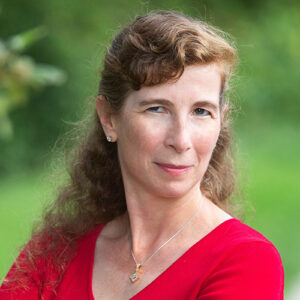Adams: Are Kids Really Ready for Kindergarten at Age 4? It’s a Problem Schools Can Solve Immediately — and at No Cost!

Get stories like these delivered straight to your inbox. Sign up for The 74 Newsletter
New York City families learned where their children had been placed for public school kindergarten on April 5. Because the district mandates that children begin kindergarten the calendar year when they turn 5, the Dec. 31 birthday cut-off means a third of students, those born in September, October, November and December, are required to start formal schooling when they are still 4 years old.
Such inflexibility leaves numerous parents worried their children will struggle.
Anecdotally, there’s reason for concern.
One mom confided, “I was very worried about my daughter needing to start K at 4½ years old. She was probably not going to be ready, especially for the very large, very academic public school we are zoned for. But I had been told in no uncertain terms if I held her out another year, she would have to go directly into 1st grade. She (would) come home and say, ‘It’s too much for my head.’ And the homework was ridiculous. Her teacher told me with a shrug, ‘Your daughter is a kinesthetic learner and I am a visual teacher.’ Um, OK then. My efforts to have her held back fell on deaf ears, as she was not ‘behind enough.’ I worried that her self-esteem would start to take a hit as she progressed through school, always being slightly behind.”
Another mother concurred, saying this about her son: “He kept it together and was well behaved in school, but all hell broke loose at home, as he was very tired and overwhelmed.” A third confessed that her son, “was a late bloomer in everything, especially reading. He received many 1s and 2s on his report card for a very long time in kindergarten, and even into 2nd grade.”
These parents aren’t imagining difficulties. The research backs them up.
In 2019, education author Kerry McDonald reported, “Previous findings by Harvard researchers showed increased ADHD diagnosis rates for children who were the youngest in their kindergarten class compared to the oldest ones. But new research just published in JAMA Pediatrics reveals that in addition to higher ADHD diagnoses of children who are among the younger ones in their grade, relative youth may also lead to increased diagnosis of intellectual disabilities and depression. … (T)hose who were among the youngest quarter in their grade were 30 percent more likely than the oldest quarter of the children to be diagnosed with an intellectual disability. These youngsters were 40 percent more likely to be diagnosed with ADHD, and 30 percent more likely to be diagnosed with depression. … These children may have been more inattentive and energetic because they were younger, not because they had ADHD. Similarly, they may have been slower to learn because they were nearly a year younger upon school entry than their older peers in the same grade. These children didn’t have an intellectual disability; they were just little.”
McDonald quoted Timothy Layton, the Harvard researcher of the above study, as observing that, “Our findings suggest the possibility that large numbers of kids are being overdiagnosed and overtreated for ADHD because they happen to be relatively immature compared to their older classmates in the early years of elementary school.”
Layton’s conclusions were echoed in 2021 in a study from Finland’s University of Turku that concluded, “Children born in December, in school districts with a Dec. 31 cut-off date, are almost twice as likely to be diagnosed with a learning disorder as those born in January. … There is a risk of both over- and under-diagnosis, meaning that the youngest in the class are proportionately diagnosed so much more that the older students in the class may even be deprived of the diagnosis and rehabilitation they need.”
Arbitrary birthday cut-offs are clearly a problem for all children. Luckily, this is a problem that, unlike others plaguing NYC public schools — students performing below grade level, segregation, dilapidated buildings, uneven teacher quality — can be fixed easily, and at no extra cost.
Get rid of the birthday cut-offs and allow families, with guidance from teachers, to decide when their child is ready to attend which grade — both academically and emotionally.
Not only would this solve the issue of children struggling and being diagnosed with learning disabilities when, in actuality, they’re just too young to be tackling the particular work, it would end the crises of students not being challenged in school, and the lack of appropriate programming available to them.
If all students were put into grades appropriate to their development, there would be less need for dedicated special education classrooms and gifted-and-talented classrooms. Which, in turn, would cost the city less money.
It would be better for students, too. We talk about segregation by race, by academic aptitude and by socioeconomic status. But what about segregation by age? Just as people need to learn to get along with those of different races, socioeconomic status and cognitive functioning in the real world, so, too, do they need to learn how to get along with those of different ages.
By cutting age discrimination in the classroom, NYC would be adding to students’ learning experience and preparing them better for life.
At no extra cost.
Alina Adams is a New York Times best-selling romance and mystery writer, the author of Getting Into NYC Kindergarten and Getting Into NYC High School, a blogger at New York School Talk and mother of three. She believes you can’t have true school choice until all parents know all their school choices — and how to get them. Visit her website, www.NYCSchoolSecrets.com.
Get stories like these delivered straight to your inbox. Sign up for The 74 Newsletter


